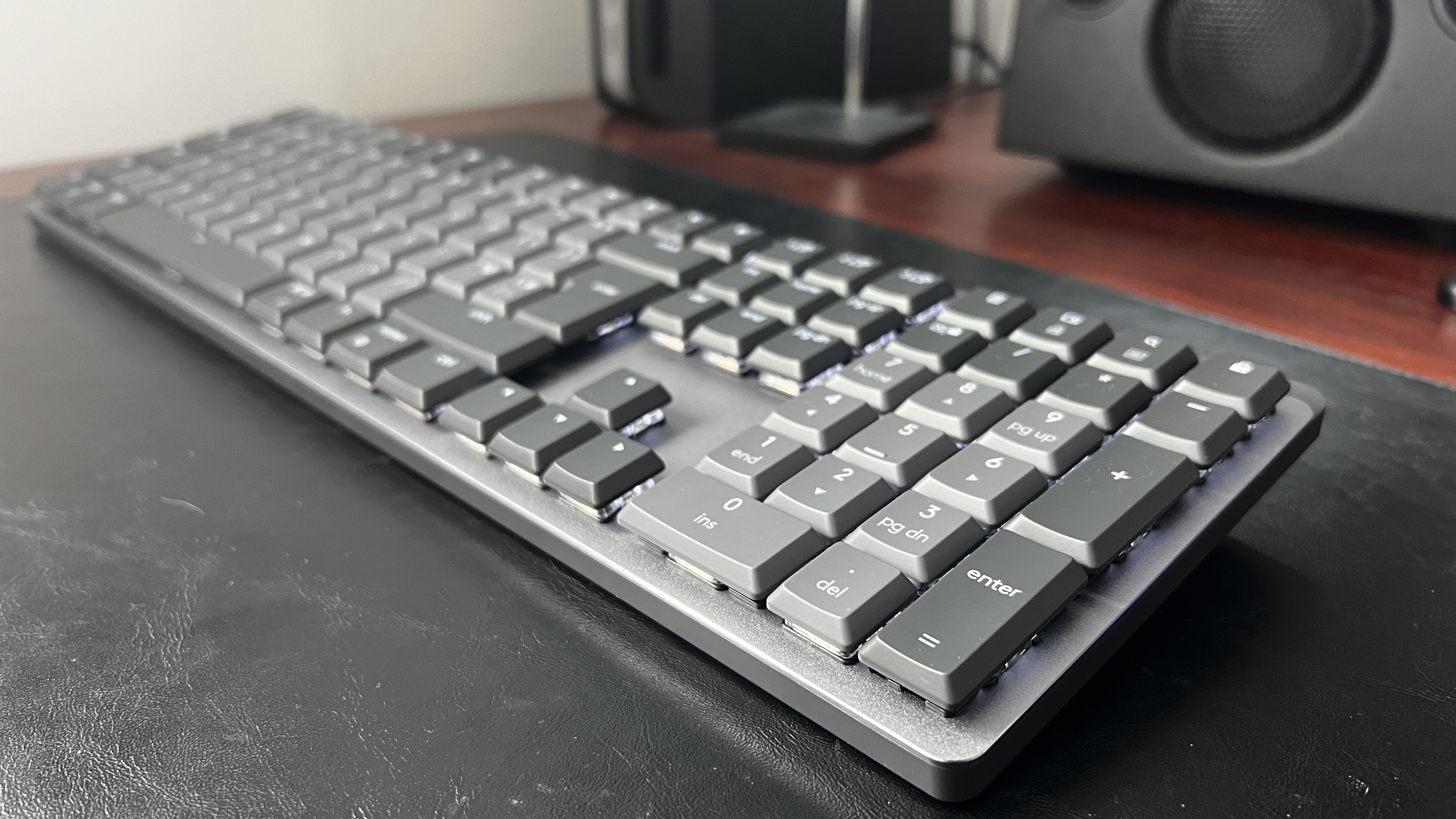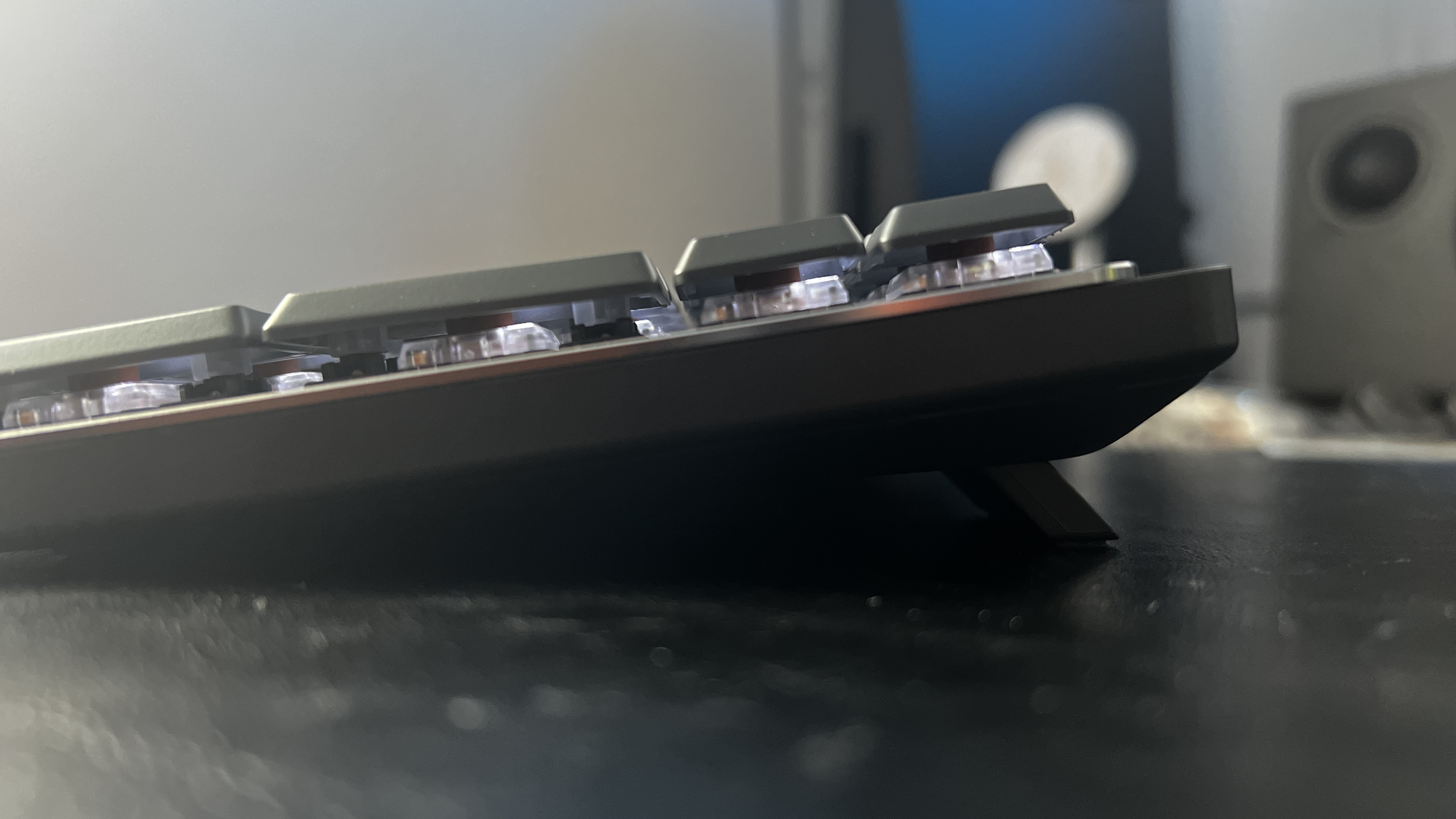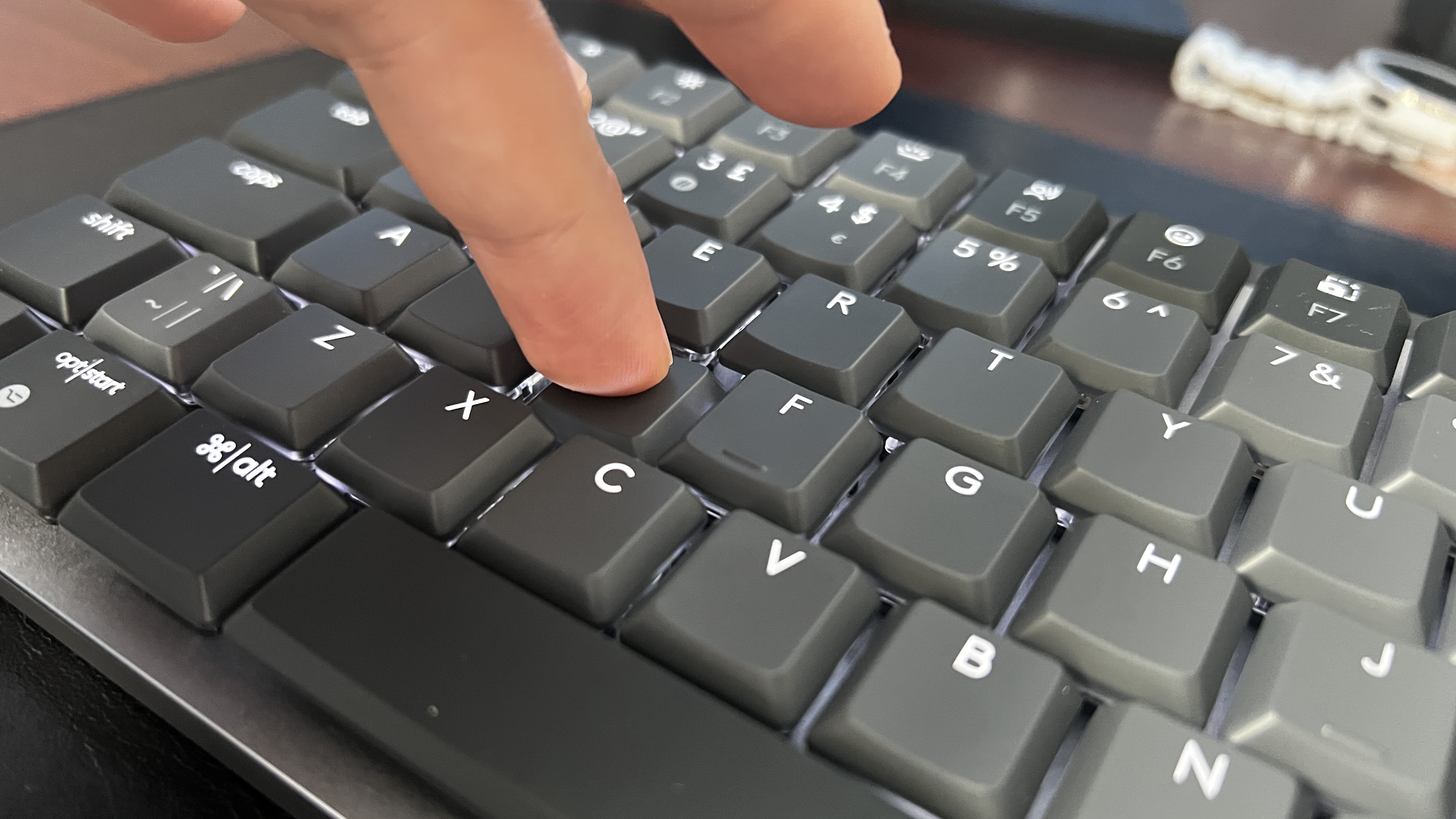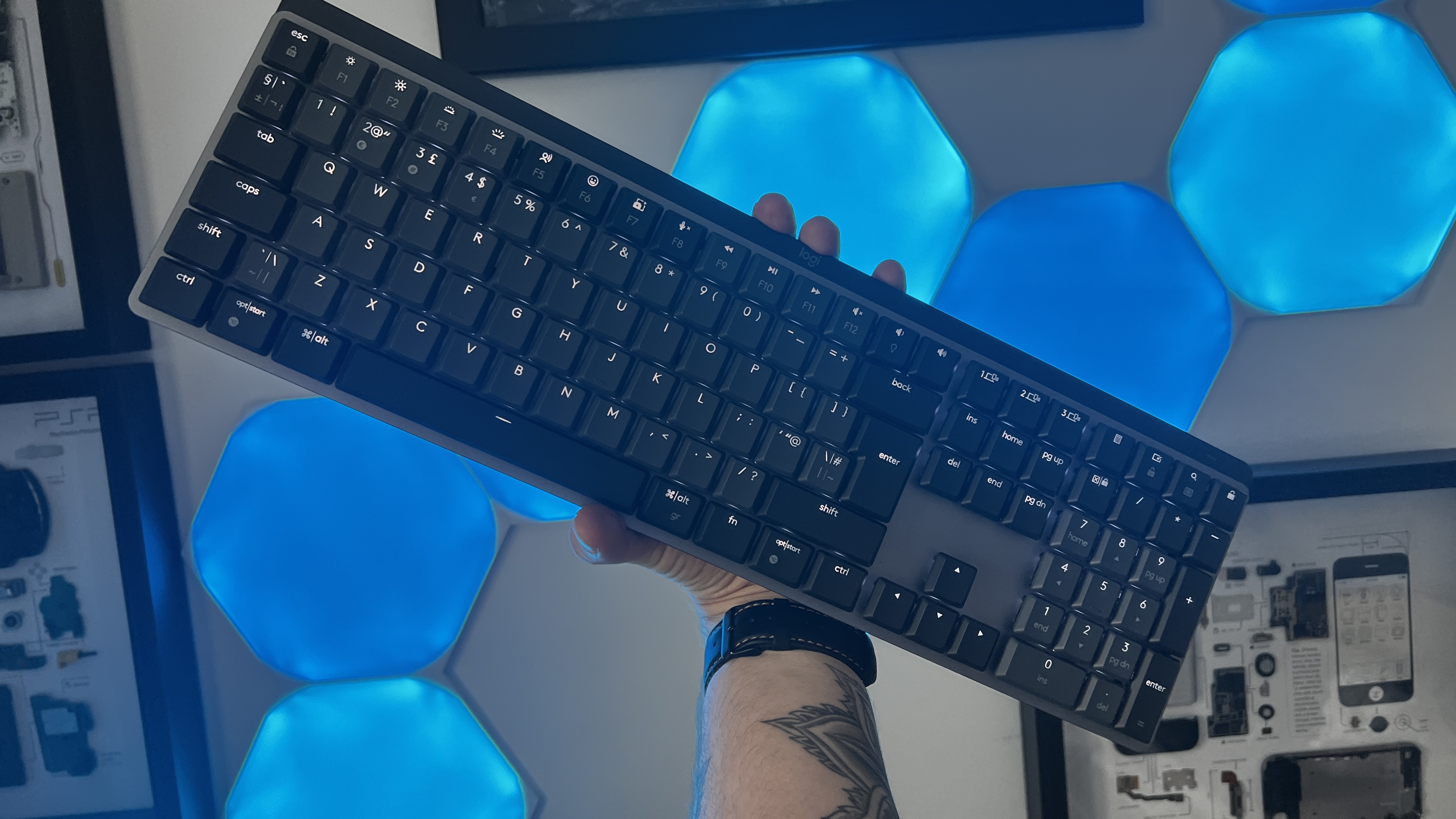Laptop Mag Verdict
The Logitech MX Mechanical is a great keyboard for productivity and gaming — sporting excellent switches, a sustainable and utilitarian design, and strong battery life.
Pros
- +
Awesome mechanical switches
- +
Attractive design
- +
Adjustable tilt
- +
Strong battery life
- +
Good for work and play
Cons
- -
Some weird function key choices
- -
Expensive at $169
Why you can trust Laptop Mag
The Logitech MX Mechanical keyboard has me nervous that the company has incepted me and sees what I dream about: the MX Keys but with mechanical switches.
Yes, I dream about keyboards (a strong sign I could use a holiday), but the MX family had one thing missing amongst its chiclet keyboards. Now, the company has finally filled that gap with low profile mechanical switches.
Does the MX Mechanical deliver on a stellar power user pairing of useful functionality, ergonomic greatness, and comprehensive software customization? Let’s find out.
Logitech MX Mechanical price and availability
The MX Mechanical comes in two sizes: the Mini (a tenkeyless board) or the full-size with numeric keypad.
You can pick up the Mini for $149/£149 and the standard MX Mechanical for $169/£169 from Logitech, which is $50 more than the original MX Keys and MX Keys Mini.
That’s quite a leap in price, so let’s get into whether the typing experience and usability justify that jump.
Logitech MX Mechanical design

At 17.1 x 5.2 x 1 inches and a weight of 1.8 pounds, the MX Mechanical is noticeably bigger and heavier than the chiclet-style MX Keys, but luckily, there is a variant for those with a smaller desk. The MX Mechanical Mini shaves a few inches and a few ounces off for a more portable affair (12.3 x 5.2 x 2 inches, 1.3 pounds).
Sign up to receive The Snapshot, a free special dispatch from Laptop Mag, in your inbox.
Beyond that, it’s exactly what you’d expect if Logitech made an MX Keys keyboard with mechanical switches: a sleek, premium chassis with keys that have a nice, ergonomic dish and tactile snap.
The durable-yet-sustainable design is formulated from 45% post-consumer recycled (PCR) plastic (47% for the mini) and a low carbon aluminum plate across the board, which, alongside the dual color keycaps, gives everything a gorgeous, utilitarian look that I love about MX hardware.
Plus, Logitech has taken the chance to address one of the more frustrating elements of the original MX Keys by adding fold-out feet to adjust the typing angle by a further eight degrees. It’s small, but very impactful to those who have never been a fan of the flatter typing profile.

However, with one fix comes a self-inflicted problem: the choice of function keys is a mixed bag. Instead of the Launchpad (app view) and Mission Control (window view) keys you get on the MX Keys, you instead get an emoji key and a key for muting your mic during Zoom calls.
I get that my workload as a writer is going to be different to others, but Logitech is making a big stink about this being a great keyboard for coders and in this use case, multitasking is important. Relegating that to a two-button keyboard shortcut rather than a labelled function key over using emojis just seems like a weird choice.
But to be clear, each function key can be customized via the keyboard’s software (more on that in just a second), but it’s a confusing choice for what is primarily supposed to be a productivity keyboard, to give you quicker access to emojis.

Logitech MX Mechanical software, lighting and battery life
The MX Mechanical works well out-the-box, with your function keys working as intended. But if you want the full experience, you’re going to need Logi Options+, which gives you the app specific presets across office apps and the likes of Photoshop and Final Cut Pro, battery level indicators, button and key customisation, and much more. Having app-specific shortcuts and the chance to switch that damned emoji key for Mission Control is warmly welcomed.
Even though it has been around for a while now, I’m still impressed by Logitech Flow. This allows users to switch the mouse cursor and keyboard between devices (on different operating systems) by moving it to the edge of one screen and onto the other. Not only that but you can click and drag items between them (or use Ctrl + C + V to do so). This is a godsend for those with more than one device (like a personal computer and a work laptop).

As for lighting, there are per-key backlights with variable brightness and different effects. You can turn them up to be bright enough for working in challenging lighting conditions (looking at my fellow night owls).
Logitech promises 15 days of battery life on a full charge with the backlighting turned on, extended to 10 months with the lights turned off.
Logitech MX Mechanical performance
Right, let’s get down to brass tax. Logitech has escaped the membrane limitations of the MX lineage and delivers a lovely mechanical experience, which is available in three switches: a linear “Red” with minimal counter-force, a clicky “Blue” if you love that extra audible feedback and the tactile quiet “Brown.”
We tested the latter and all of these options provides a 19mm pitch with low-profile keys that are reminiscent of the Logitech G915, one of the best wireless keyboards for gaming, but with the Brown switches, you get a nicer keystroke that is comfortable at full press with less noise — quiet and springy with a nice tactility.

This translates into a stronger typing.com test result than I achieved with the traditional MX Keys: hitting 91 words-per-minute with 98% accuracy (my average with other keyboards is around the 84-85 wpm mark, and I hit 89 with the MX Keys Mini).
Not only that, but the switch to mechanical makes this a pretty damn good gaming keyboard, too. My journey in finding a great keyboard for both work and play has been a turbulent one: the chiclet keys of the MX Keys are pretty naff for FPS titles and while gaming keyboards might be OK for long form typing, the sometimes embarrassing levels of RGB is a massive turn off.
So, to get something that looks like a proper grown up keyboard, which is great for getting stuff done and killing Spartans in Halo Infinite, is a joyous achievement.
Bottom line

On the face of it, the MX Mechanical is everything we want it to be, but in reality, it’s not that simple.
Logitech nails the essentials with awesomely tactile switches and long battery life, alongside taking this chance to address problems with the original MX Keys such as adding an adjustable tilt.
However, the price is going to put some people off and the decision to replace the Mission Control function key with an emoji one is a baffling move to MX power users like me.
At the end of the day, it’s a good keyboard that is a joy to type on, but the choice is yours: a chiclet keyboard with slightly better functionality for less, or a mechanical board for more.

Jason brought a decade of tech and gaming journalism experience to his role as a writer at Laptop Mag, and he is now the Managing Editor of Computing at Tom's Guide. He takes a particular interest in writing articles and creating videos about laptops, headphones and games. He has previously written for Kotaku, Stuff and BBC Science Focus. In his spare time, you'll find Jason looking for good dogs to pet or thinking about eating pizza if he isn't already.

